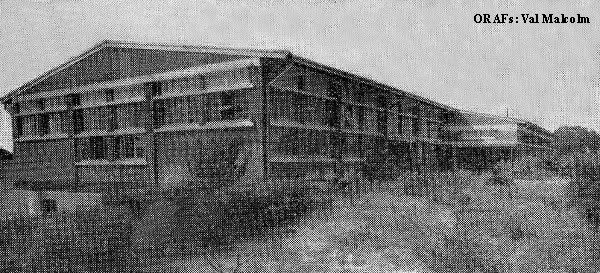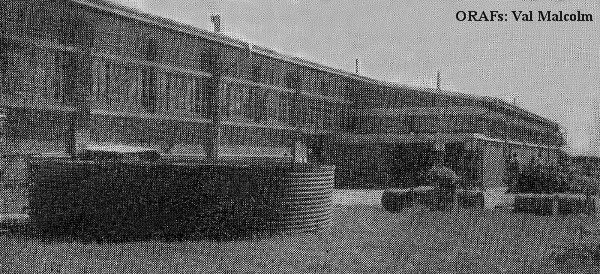Rhodesian Bata Shoe Co., Ltd. in 1951
Gwelo, Southern Rhodesia
P.O. Box 279
Telephone: 390, 391
Tanners, Manufacturers of and Dealer in Footwear
The Rhodesian Bata Shoe Company, Limited, commenced operations and production of footwear in Gwelo in 1939. Somewhat improvised premises were used at this stage; in fact, an unused Cotton Ginnery with minor alterations comprised the entire factory site.
The number of employees by the end of 1939 amounted to 25 Europeans and 90 Africans. The Europeans were mainly men from overseas and a few Rhodesians, the former being key men with considerable experience in the production of footwear, having come from other BATA factories. At. this stage Rhodesians were employed mainly in clerical positions, but later as the industry progressed, Rhodesians were initiated into the trade of
shoe-making.
To begin with, the production of footwear comprised mainly a series of experiments. The African had to be put to the test as it was necessary to ascertain whether lie was suited and could adapt himself to that particular type of employment which was new and strange to him. These experiments and tests were carried out in the production of rubber-soled canvas shoes. A conveyor, mixing machines and vulcanising plants, etc., were installed and production commenced. However, rapid strides over difficult war years have brought us to the present stage where we can see that those early efforts were not in vain.
View of Complete Premises
Gwelo being a central position in Rhodesia makes an ideal distributing centre for our retail shops. In 1943 the factory moved from the old Ginnery site to the Company's new 350-acre site two miles out of Gwelo. The new factories are comprised of modern brick buildings designed on up-to-date lines to afford the maximum of light and air to the employees. Included in these buildings is our Tannery, which commenced producing sole leather in 1943 and later upper leather in 1945. To-day the tannery is capable of soaking up to 400 hides daily, and good progress base been made with turning out all kinds of sole, upper and lining leathers.
Early in 1946 the Company acquired from the Government of Southern Rhodesia a complete Air Force training camp with all its buildings, etc. The airmen's quarters have been converted into housing for the African employees, and other buildings into eating houses, recreation rooms, hospital, etc., for the Africans. From other converted buildings we have excellent. accommodation for the European employees, including large spacious flats and single rooms. The Officers' Mess was converted into a European Club where employees board and relax in comfort after their day's work. The Club is surrounded by a very pretty swimming bath, tennis and squash courts. All the converted buildings, although. very comfortable, are only temporary, and as building material becomes available we hope permanent buildings will be erected. In addition to the above, a few new brick houses for the married staff were completed and plans are being prepared for the erection of more permanent brick buildings in the near future. The Company has also made use of acquired hangers as warehouses.
During the war considerable difficulty was experienced through lack of vital machinery and raw materials. Not only were replacements' for the machinery unavailable, but just having opened the industry in 1939 we did not have" till; machines with which to commence and had to make do with machinery manufactured locally.
Office Block
New machines are, however, now arriving although the supply position is still difficult and the production is being mechanised more and more every month. .
During the war 90 per cent, of all leather footwear was consigned to the British armed forces, and after completion of Military orders the Company has carried out during 1946 and 1947 a complete change over to civilian footwear production.
The Company employs now nearly 1,000 Europeans and Africans, most of whom are being housed on the Company's premises.
As against a Military production of boots and army shoes produced during the war, the Company has now commenced producing many types of civilian footwear: golf shoes, leather sandals, ladies' platform slip-lasted shoes children's sandals. During 1947 a considerable export trade has been built up, particularly in tennis shoes which, under the trade name "TOURNAMENT," have been shipped in quantities of hundreds of thousands pairs to the United Kingdom. Sweden, Belgium, Australia, New Zealand^ as
well as other parts of the world. The Company is also building up an export trade in various types of leather which is being shipped to-day also to hard currency countries.
Besides manufacturing, the Company has established a series of retail shops in Southern and Northern Rhodesia, Portuguese East Africa and Nyasaland.
End
Extracted, OCr'd and recompiled from the Year Book and Guide of the Rhodesias and Nyasaland 1951.
Year book was donated to ORAFs by Mrs. Val Malcolm of the Rhodesian Air Force. Thanks Val
Labels: Rhodesian Bata


0 Comments:
Post a Comment
Subscribe to Post Comments [Atom]
<< Home